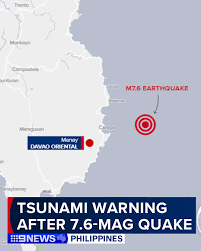Earthquake and Tsunami Warnings in the Philippines

Introduction
The Philippines, located on the Pacific Ring of Fire, is frequently affected by seismic activity, making earthquake preparedness essential for its inhabitants. In recent events, significant earthquakes have raised concerns about potential tsunami warnings, underlining the importance of prompt responses and effective public communication to mitigate risks associated with such disasters.
Recent Events
On October 15, 2023, a 7.1 magnitude earthquake struck off the coast of Mindanao, prompting the Philippine Institute of Volcanology and Seismology (PHIVOLCS) to issue tsunami warnings for coastal areas. Thankfully, the warnings were lifted after careful monitoring, but the event highlighted the looming threat that such natural occurrences pose to the densely populated islands.
Following the earthquake, local authorities urged coastal residents to remain vigilant and prepared for potential aftershocks. The regional tsunami warning system was activated, allowing coastal monitoring and immediate alert protocols to be put in place while safety measures were communicated through various channels, including social media and text messaging.
Preparation and Response
The government has been enhancing its disaster preparedness initiatives, particularly in coastal regions vulnerable to tsunamis. Educational campaigns aim to equip citizens with knowledge on identifying warning signs, such as rapid sea level changes and unusual oceanic behaviour, that may indicate an impending tsunami.
Moreover, collaboration with international seismic monitoring agencies has strengthened the Philippines’ ability to respond to tsunamis and earthquake threats. This cooperation enhances the tracking of seismic activity and fosters the sharing of technological resources necessary for disaster response planning.
Conclusion
As seismic activity continues to affect the Philippines, the recent earthquake and tsunami warning serve as critical reminders of the region’s vulnerabilities. The resilience and preparedness of communities play a significant role in mitigating the impacts of such natural disasters. Moving forward, it is vital for both local governments and citizens to stay informed and proactive in disaster readiness strategies, ensuring a coordinated response to any future earthquakes and tsunami threats. The need for continued education and safety drills is paramount, as these measures could save lives in a region prone to natural calamities.
